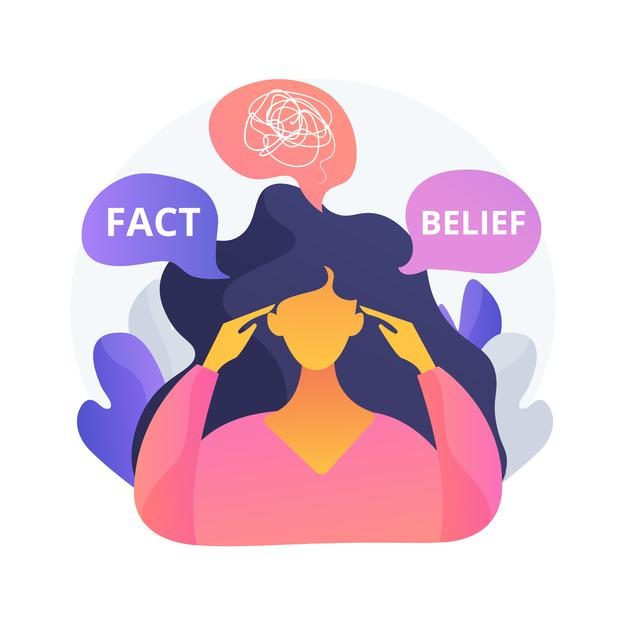Embracing duality: the leadership constant!
how good can you balance on the tightrope of paradox?
“The test of a first-rated mind is the ability to hold two opposing thoughts at the same time while still retaining the ability to function.”
F. Scott Firzgerald
Dear readers, welcome to another edition of “Leadership Reflections”
I work to foster a community of forward-thinking individuals who seek the path to excellence in leadership, no matter if you manage people or you are an individual contributors, or a stay-home dad working hard to help raise a strong family. Because the call for leadership is a call to step up; it’s not a titles call, it’s a human call!
Today we embark on the exploration of a concept that challenges and defines the very essence of exceptional leadership: the ability to embrace cognitive dissonance.
What is Cognitive Dissonance?
Cognitive dissonance refers to a situation involving conflicting attitudes, beliefs, or behaviors. This produces mental discomfort leading to the change in one of the attitudes, beliefs, or behaviors to reduce the discomfort and restore balance.
What Causes Cognitive Dissonance?
- Forced Compliance Behavior
- Decision Making
- Effort.
Paraphrasing then…
“The litmus test for a superior mind resides in its remarkable capacity to simultaneously embrace diametrically opposed notions while preserving the faculty for coherent functioning, without experiencing cognitive dissonance.”
This ability, similar to tightrope-walking over the abyss of contradiction, is a reflection of true tenacity, the hallmark of intellectual determination. It thrives in a crucible of contrasting, even contradicting ideas, because it ignites the fire needed for innovative thinking. It transforms rigid dogma and binary decision-making into the flexible gold of nuanced comprehension.
So let’s explore a few dualities that any leader must consider for exceptional performance and high impact.
1. Leadership walk on the ‘short- long-term’ tightrope.
Any effective leader must maintain balance on many fronts and across multiple dimensions, but certainly in switching seamlessly between short-term goals and long-term vision. There can’t be a stumble on the tightrope of immediate results and a sustainable future. A true leader stands out when is able to manage successfully this delicate balance. It's like being a juggler while tightrope walking, keeping multiple balls in the air without dropping any, and without losing balance.
Leadership is about maintaining that balance between what needs to be done right away and what needs to be achieved in the future, while juggling priorities. It's a skill that requires careful planning, adaptability, and the ability to see both the trees and the forest at the same time.
2. Embracing cognitive dissonance: the debate on ethical AI
Let's now take a quick look at the heated debate surrounding the ethical concerns of artificial intelligence in general and generative AI in particular. Supporters will say that AI provides a boost for productivity in practically any field and for instance, it can be a game-changer in imaging diagnostic in medicine. Skeptics and even fearful voices express their concerns, warning about the risks associated with reaching the point of autonomous AI decision-making, including worries about security threats or privacy breaches with serious consequences.
Deep thinkers however will be able to navigate this intellectual terrain with skill and sophistication. They know they can’t fall into the trap of binary reasoning or hold absolute viewpoints, understanding the importance of balancing opposing thoughts at the same time; knowing that embracing AI's potential for both immense benefit and potential harm aren't contradictory; they are a testament to nuanced thinking.
This mental flexibility is critical to create ethical frameworks that harness AI's power while minimizing the risks.
The ability to entertain opposing viewpoints simultaneously, without experiencing cognitive dissonance, unlocks innovative solutions that go beyond binary thinking and empowers us to tackle complex challenges with wisdom and with caution.
Cognitive Mastery: Balancing Tradition and Innovation, Stability and Growth.
Strategic Innovation:
The assembly of a diverse team can be a true game-changer, not as a merely a collection of individuals but as the fusion of expertise from both traditional and innovative backgrounds. Picture it as a dynamic blend of wisdom from the experienced and fresh perspectives of the avant-garde.
Here, leaders may find themselves at the crossroads of two seemingly opposing worlds, but it is in this balance that the magic happens. The wisdom of the past bringing the tested-and-proven methods, harmonizes with the provoking insights of the future and the new-and-disruptive approaches to problem solving. This synergy transcends the confines of binary thinking, ensures an anchor on the known while opening up the uncharted territory of the possible, of the ‘Why Not?’, ‘What If?’
Pilots and Prototypes:
This is where equilibrium manifests as a cautious but daring dance, a tightrope walk over a abyss of uncertainty. To maintain the equilibrium between stability and innovation, you have to do experiments and pilot projects, introduce cutting-edge technologies into select processes to test what’s possible. These pilot projects act as enablers, allowing to test the waters of innovation without jeopardizing the stability that holds the organization working. This is a testament to the power of cognitive dissonance.
Open Dialogue:
But the journey doesn't end there, a good leader must foster an environment where a true symphony of diverse perspectives is actively sought after (not merely welcomed). This is where 'Open Dialogue' takes center stage and cognitive diversity reigns supreme, as the team is encouraged to voice their thoughts and opinions freely, even playing devil’s advocate. It is in this mosaic of voices where lies the key to driving growth while maintaining rock-solid foundations.
Adaptive Leadership:
In this type of journey a successful leader has to be a master navigator understanding that the balance between tradition and innovation is dynamic, constantly shifting like the tides in the ocean. This is where 'Adaptive Leadership' steps in—a leadership approach that thrives on flexibility and adaptability.
Leaders who embrace cognitive dissonance recognize that it's not a one-time act but an ongoing process to balance between stability and growth. They remain agile, ready to adjust their strategies based on the ever-evolving dynamics of the world around them. This adaptability is the cornerstone of effective leadership in a world defined by change.
Architects of Transformation
Any leaders that profoundly understands what it takes to grasp the significance of embracing cognitive dissonance will be able to forge himself into an architect of transformation.
Cognitive dissonance is the discomfort we feel when we hold two conflicting beliefs or attitudes, or when our behavior contradicts our beliefs. In a leadership capacity, letting this discomfort win, can be a major obstacle to change. Leaders who embrace cognitive dissonance are able to hold two conflicting ideas in their minds at the same time and not feel uncomfortable. They are able to see the world in shades of gray, rather than black and white, and this makes them more creative and innovative, because they are not afraid to challenge the status quo. Embracing cognitive dissonance particularly equips you to lead effectively through period of transformation.
Here how you transform your leadership to be an architect of transformation by letting cognitive dissonance be your friend:
Increased creativity and innovation: When leaders are open to new ideas and perspectives, holding opposing views without judging, they are more likely to come up with creative solutions to problems.
Improved decision-making: When leaders are willing to challenge their own beliefs and embrace the possibility of the opposite to be true, they are more likely to make sound decisions.
Greater flexibility and adaptability: When leaders are willing to accept that there is no one right answer, and are capable to walk in that tightrope of paradox for as long as needed, they are more cable to adapt to change.
Stronger relationships: When leaders are willing to be vulnerable and open to feedback not getting defensive, even openly accepting opposing comments without jumping to reason or analysis, genuinely listening trying to extract the truth that lies within, they are much more likely to build strong relationships with their team members.
Embracing cognitive dissonance can be translated into “feeling comfortable with being uncomfortable,” which means to realize that your job is to calm your rush to decide or conclude, hold the torch and walk into the dark to help illuminate the deepest corners of human cognition with reason and insight, rethink all assumptions and reimagine what is possible.
Here are some tips on how to embrace cognitive dissonance:
Be open to new ideas and perspectives. This means being willing to listen to people who have different views than you. It also means being willing to challenge your own assumptions.
Be willing to question your beliefs. Don't just accept your beliefs at face value. Ask yourself why you believe what you believe. Are there any other ways of looking at the situation?
Be willing to take risks. Be willing to step outside of your comfort zone and try new things if you want to drive change and being driven by it.
Be patient. It takes time to embrace cognitive dissonance. Don't expect to change overnight.
Remember, today’s newsletter started with the quote below… I suggest you read it and re-read it until you are able to understand the challenge is presents you with, practice it enough in your life so that it becomes part of your leadership strengths.
“The test of a first-rated mind is the ability to hold two opposing thoughts at the same time while still retaining the ability to function.” F. Scott Firzgerald
P.S. Before I go, here you have “The Treat,” where I share some of the music that kept me company while writing … Enjoy as you bid farewell to this post
“Lead yourself, Learn to live. Lead others, Learn to Build.”
If you enjoyed reading this post consider subscribing to the newsletter for free, joining the community and sharing your thoughts.










Dear Oksana, thanks for your feedback and glad that expression resonated with you. I like it did because when playing with words for certain parts of the post, that one in particular was one I wanted to try to create the strongest image possible as to why this matters and what are the implications… is there any other thought or idea that the post triggered? I’m interested in better understanding how do you think this post, if used with a team, can be used to continue raising the bar of people’s thinking for higher impact in decision making?
Thank you for sharing such a detailed perspective on this topic, Sebastian! I really liked how you compared embracing the duality with holding a torch in the darkness of human cognition. It says a lot! Very thought provoking!